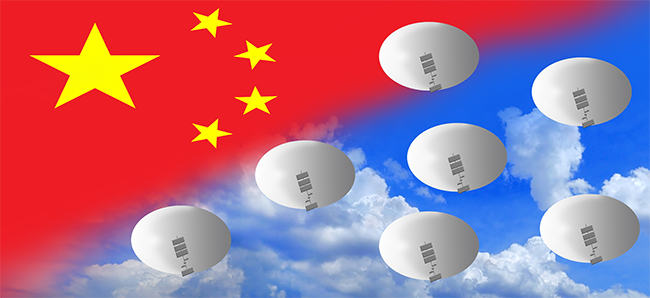For approximately one week in early 2023, from January 28th when the Chinese Spy Balloon was first observed over the State of Alaska, to February 4th when the Chinese Spy Balloon was shot down in South Carolina as it drifted over open water off that state’s shore, the entire world watched in rapt attention as a freaking <em>Chinese Spy Balloon</em> drifted lazily across the United States mainland at approximately 60,000 feet, sometimes changing its course challenging China’s assertion its presence in the United States was inadvertent and seemingly challenging the US to do something about it.
China, for its part, asserted it was not a spy or surveillance balloon, but a “civilian airship” subject to a “force majeure accident” because it was blown far off its intended course.
This presents an excellent opportunity to understand how Force Majeure works. So, let’s ask ourselves, what is “Force Majeure,” and is China’s argument credible in any way whatsoever?
Force Majeure is an important legal doctrine, that can excuse performance or problems in unforeseeable circumstances. In contract law, it is a concept that exempts the contracting parties from fulfilling their contractual obligations due to unforeseeable circumstances beyond their control. Force Majeure will often apply to what are commonly known as “acts of God” but it can also apply to unforeseeable acts of man, such as theft, vandalism, acts of war or terrorism.
Read our older blog article about Force Majeure, if you want to know more about this important legal concept.
What’s important to know about Force Majeure, is that many courts require a party invoking a Force Majeure provision to demonstrate that (1) the triggering event was beyond its control, (2) without its fault or negligence, and (3) it made efforts to perform its contractual duties despite the occurrence of the event. The third requirement doesn’t seem to be relevant to the situation involving the Chinese Spy Balloon, although it would be reasonable to ask what did China due to mitigate or avoid the “Force Majeure accident?”
This doctrine doesn’t permit one to shoot a gun up in the air, and then claim “force majeure” if the bullet comes down somewhere and hurts someone. You cannot speed a car through a crowd, hit someone, and claim “force majeure.” Such activities would be negligence at the least, and not pass these factors.
How do these factors apply to the Chinese Spy Balloon?
Was the Chinese Spy Balloon beyond China’s control? We know at least two things: First, it’s China’s balloon and China lofted the balloon subject to where the winds take it. Second, and most importantly, the balloon changed course at least several times during its transit. This suggests China’s argument wouldn’t meet the first requirement that the ballon was beyond its control.
Is China without fault or negligence as it relates to the path of the Chinese Spy Balloon? Fault or negligence requires us to ask whether China is directly responsible or the proximate cause of the balloon and its path. Clearly, it’s China’s ballon and China is directly responsible for the creation and launch of the balloon. Is China responsible for the path taken? Prevailing jet streams move from West to East in the Northern Hemisphere on Earth, which means anything China launches from its mainland has to cross North America at some point. Therefore China’s launching a balloon does appear to be the proximate cause of the Chinese Spy Balloon traversing the United States. Furthermore, given China appears to have the ability to control the course of the Chinese Spy Balloon, such control suggests China is indeed the direct cause for the path of the balloon. This means China’s argument doesn’t meet the second requirement that it is not without fault or negligence.
Finally, what did China due to mitigate or avoid the circumstances of the balloon hitting or traversing the US mainland? As of the date of writing this article, we have not found any information discussing what China did to avoid the problem. There is no press or other information indicating that China contacted US authorities to explain, warn or apologize for the balloon’s path and trajectory. It does appear China intentionally directed the balloon to the US mainland, given the balloon’s ability to navigate in the jet stream.
China’s claim that it’s spy balloon is a force majeure accident is bunk.
Law 4 Small Business (L4SB). A little law now can save a lot later. A Slingshot company.




